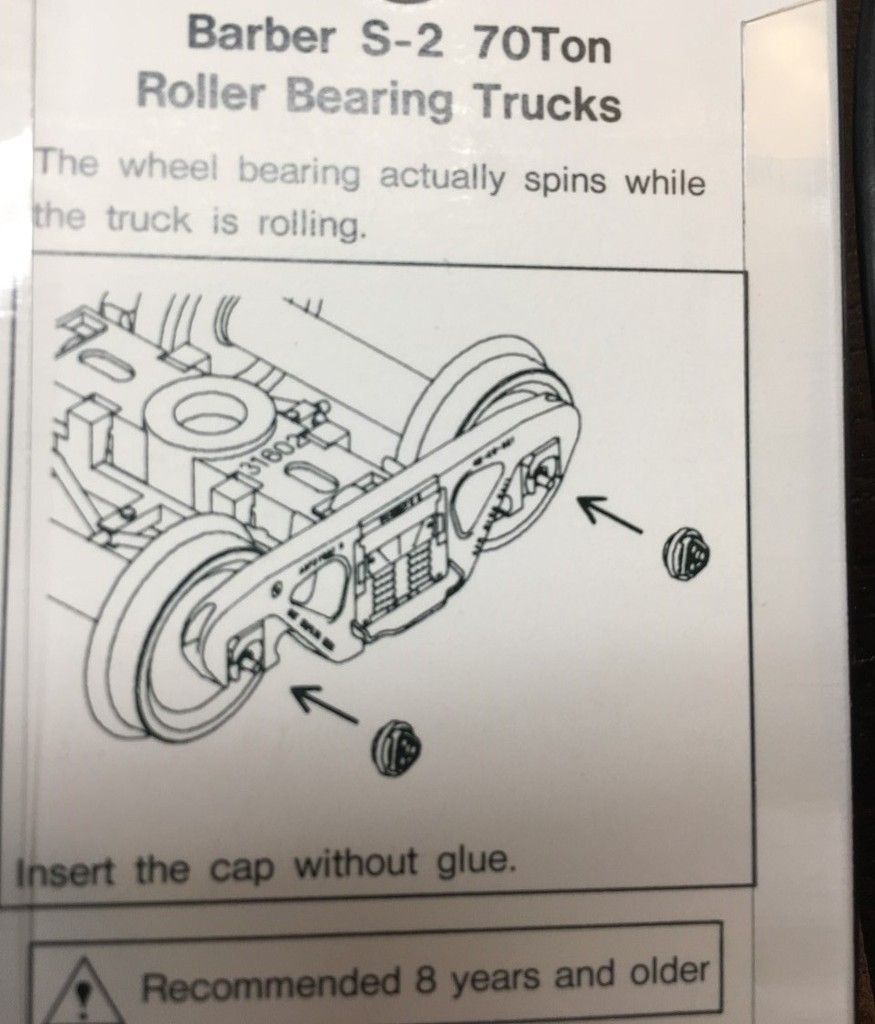Is it worth it to replace the trucks on your cars? What is the advantage and is it worth the cost? And which one do you use?
I only replace the trucks if they are problem children. Most of the trucks that come with RTR rolling stock are satisfactory. With Accurail kits, I replace the wheel sets but not the truck. I have a reaming tool which I bought from Micro-Mark which helps the performance of those trucks as well.
Couplers are a different matter. If it doesn’t have a KD #5 or the whisker equivalent (can’t remember the number) it isn’t going on the layout.
Hello all,
Much of my rolling stock is vintage and came equipped with Talgo type trucks and truck mounted couplers.
I have replaced the trucks and body mounted the couplers.
Take a look at this post: [url=]Sprung vs. un-sprung trucks[/url] http://cs.trains.com/mrr/f/13/t/249039.aspx
Hope this helps.
YES!
.
Every piece of freight equipment (except one) on the STRATTON & GILLETTE RR rides on Kadee trucks. The only pieces of eqipment that do not get trucks replaced are Kadee freight cars, but they get 0.110" wheels installed.
.
The one piece not on Kadee trucks has an old set of Varney sprung trucks, but it has Kadee 0.110" wheelsets.
.
-Kevin
.
Hi John:
I only replace trucks if they are defective or have the couplers mounted on them. The exception is caboose trucks where the supplied trucks don’t have leaf springs.
I haven’t had a lot of defective trucks. The most recent replacements were sprung trucks supplied with 1940s vintage Star Line stock cars. The castings were very fragile to the point where they would break if I tried to install a missing spring (zinc rot I’m guessing). I have also had a few BB trucks that were not moulded properly so there was a gap at the bottom of the axle bearings that would allow the axles to fall out.
I like Tichy trucks. They are nicely done without too much flash and they are inexpensive.
I bought a truck tuner quite some time ago but I have only used it once or twice. I have found that if I bend the side frames outward by 30 degrees or so when they spring back they will stay bent just enough to give proper clearance on the axles. I have only had to do that a couple of times and I have about 250 cars.
I use InterMountain wheel sets. I know that some modellers have encountered problems with having the wrong axle lengths in some cases but I have only rarely seen that with my rolling stock.
If you were modelling to Proto 87 standards you could replace all of your trucks with high end Kadees or other specialty trucks. Kevin has done that and I respect his modelling standards which are obviously higher than mine. If that’s your thing then go for it, but you will spend a lot of money and most people wouldn’t know the difference.
Regards,
Dave
Even plastic talgo (coupler attached - usually horn hook coupler) train set type trucks can look OK if the coupler part is chiseled off and the truck is weathered and gets new wheels.
My own experience is that there is no one make of truck that fits equally well on all underframe bolsters. So I keep a selection handy (Walthers, Bowser, and some other makes), but Kadee is my usual go-to if I feel I need to replace a truck.
Ditto replacement wheels. I like Kadee wheels (wire brush in a Dremel removes the coating from the wheel tread) but there are trucks where Intermountain wheels are a better replacement, so I keep a supply of both. This is not new: way back AHM trucks with the awful wheel sets and deep flanges were an unusual and hard to retro-fit, until I learned by chance that the RP-25 standard plastic wheels I had been removing from Train Miniature kits in favor of metal wheels did work in AHM trucks. The TM plastic wheels are not very good but those are likely my only plastic wheels that I would tolerate, at least until I replace the original AHM truck with something else.
Dave Nelson
Unless the truck does not track well, or the wheels don’t roll freely, (I do have a reaming tool), or in a rare momentary fit of rivet countering when I decide they’re not prototypical enough, I do NOT change trucks or wheels.
I do remove the coupler boxes from Talgo type trucks and body mount them.
I test all my rolling stock on a 2% grade and if they roll freely, that’s good enough for me!! In fact, I’d go far enough to suggest that rolling stock which is too free rolling could cause embarrassment, if your sidings aren’t perfectly level.
I’m sure those who do automatically change out trucks and wheels have their reasons [?][?] but I’d rather spend my model railroad budget on what I consider necessary.
[2c] Cheers, the Bear.
I started this layout with a collection of mostly Athearn and Tyco cars from my previous layout in the early 1960s. Eventually I swapped out those plastic wheelsets for metal ones. I had to replace the trucks to replace the Tyco wheels, and I found that many of the Athearn trucks with real springs were not strong enough to support metal wheels and axles, so those had to go, too. Most of my replacement trucks are Tichy. All trucks get weathered before going on cars.
I don’t usually replace trucks (or wheelsets, for that matter) unless something is defective with the original. Here’s a Tyco gondola with its stock trucks and wheels, although the Talgo-style couplers have been cut off and replaced by body-mounted Kadees…
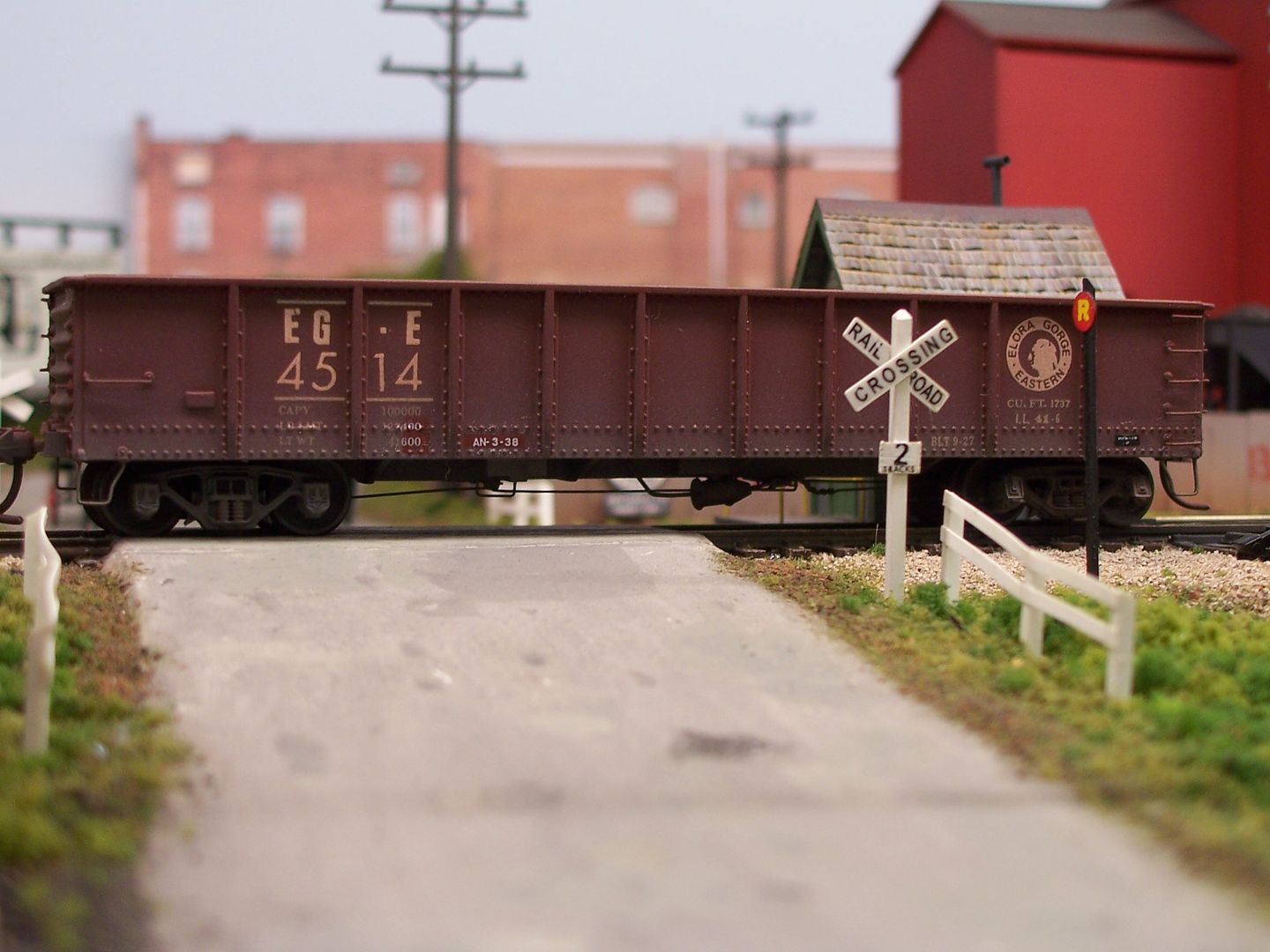
This car, a modified Westerfield kit, naturally came without trucks, and since I built it to represent an older car which had been relegated to MoW service, archbar trucks were appropriate…
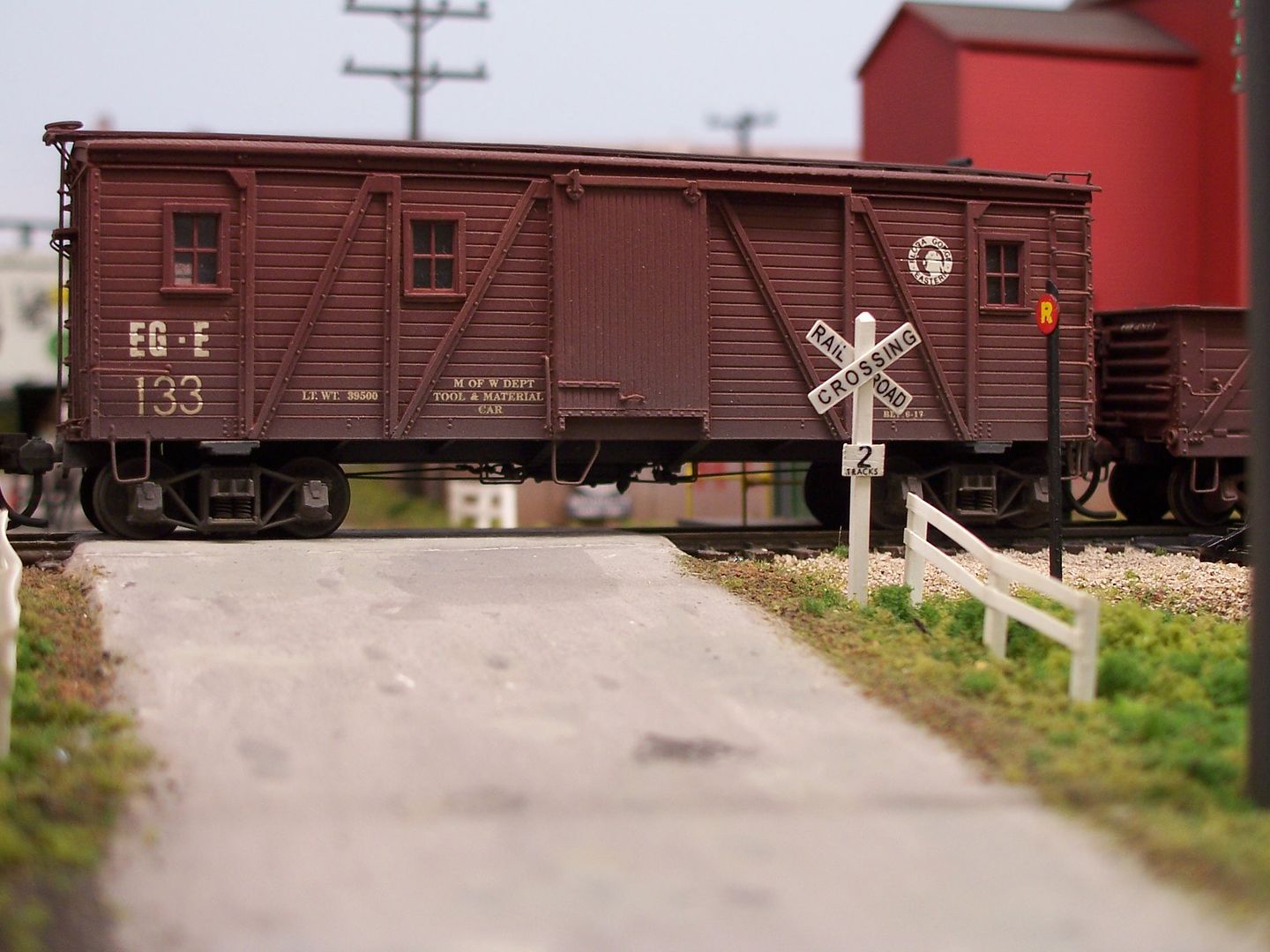
…however, the only such ones I had on-hand were Kadees, so I modified them slightly with a black-out panel behind the normally sparse-looking spring package…
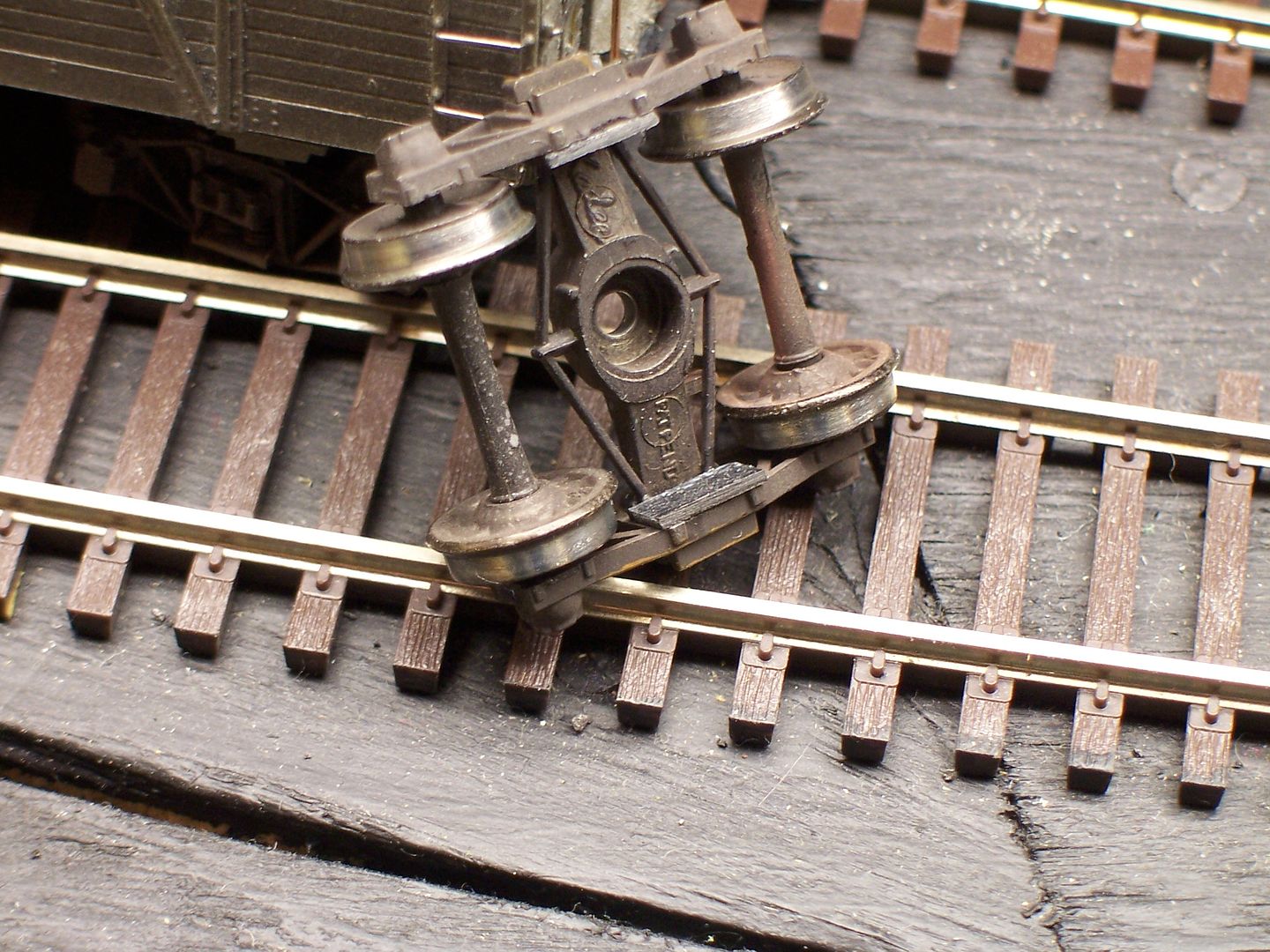
Another car, this one from Train Miniature. There was at least one batch of TM cars which came with bad wheels (out-of-round) in sprung trucks, and for those, I used either Kadee (metal) or Athearn (plastic) wheelsets which I had on-hand. This car may have been from that batch, but when I bought it off the “used” table at a nearby LHS, it had no trucks at all. After a few modifications, and paint and lettering (C-D-S), I put some Tahoe Model Works two-level Dalman trucks under it…
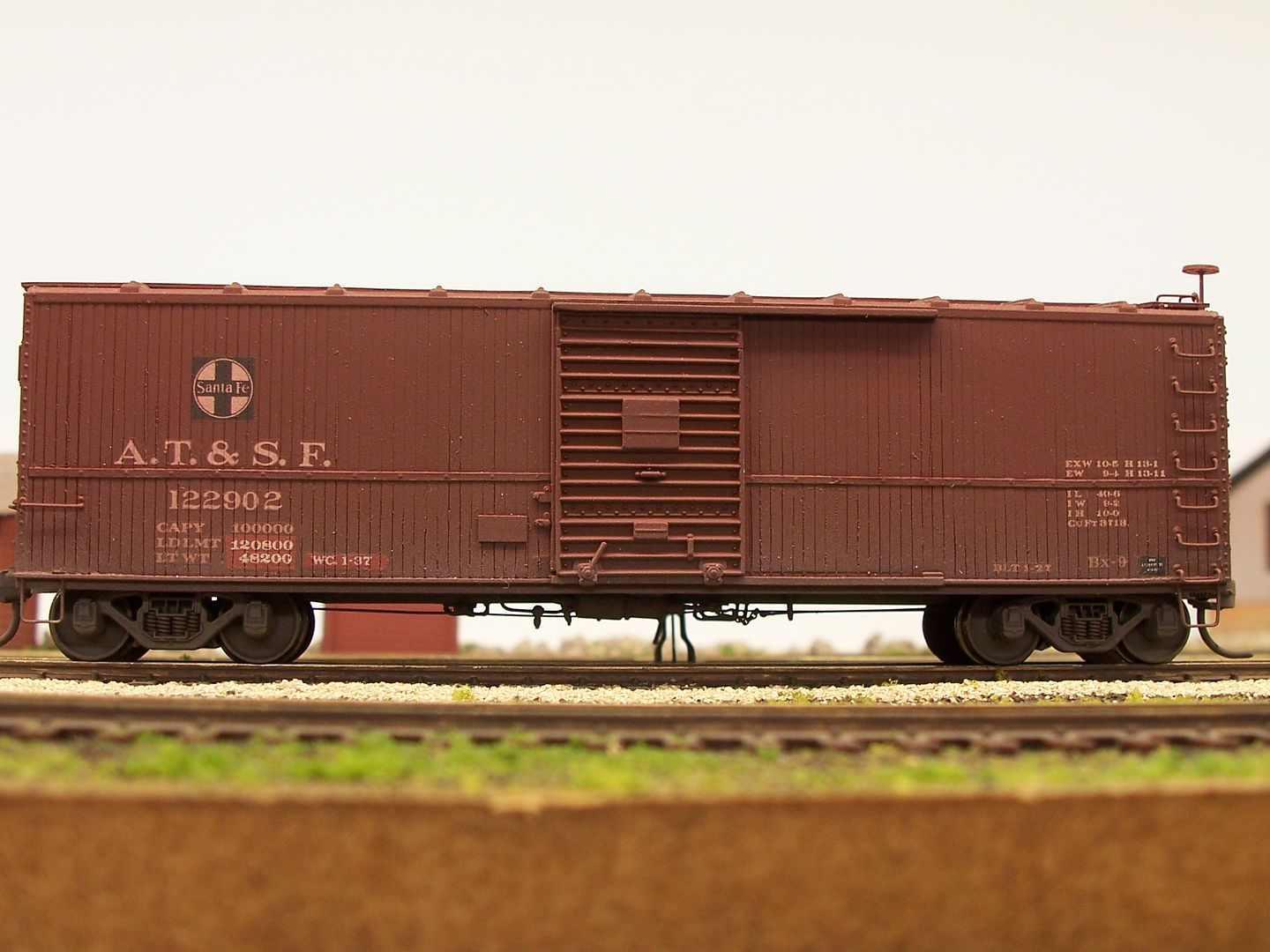
The situation was similar for this Athearn boxcar and seven others like it, which were bought as used body shells, in various states of disrepair. While I’m not a big fan of metal wheels, I kinda liked the look of the Proto National B-1 trucks, which were popular around the time these cars would have la
My rolling stock needs to be “free-rolling” because I need to be able to pull trains up a 1.5% grade out of hidden staging yards with a single steam locomotive. (The visible 2.2 percent grades are a helper district.) After alot of testing I standardized on Accurail trucks (aided by the Micro-Mark truck tuner tool) and Intermountain wheel sets for almost all my freight cars. I try to have all cars be able to break friction and roll by themselves down a 0.5 percent grade. The Proto 2000 wheels and trucks are free-rolling enough that they don’t get replaced, but they are more expensive and don’t get used as replacement trucks and wheels. I’ve found that my most economical solution was to buy the Accurail trucks in 50-pair lots and the Intermountain wheel sets in boxes of 100.
Grinnell
Most of my fleet of about 1000 freight cars ride on Kadee sprung metal trucks that have been refitted with Intermountain code 110 wheel sets. Because this is a metal axle in a metal sideframe, I do use a very small drop of oil when the wheelsets are installed - it has never caused a problem.
Reason, free rolling and better tracking. Metal trucks provide a small amount of additional weight down low where it counts. This allows pulling long trains with cars somewhat lighter than NMRA Recommended Practice.
By long trains I mean 50 cars and longer.
Do I replace every set of trucks? - no, some original trucks are deemed acceptable.
Are all the trucks I use Kadee? - no, I also have Lindberg, Varney and others.
Only a few cars retain their original rigid frame trucks, my experiance shows equalized trucks do track better.
Sheldon
I don’t replace trucks, wheels or couplers unless there is a problem interfering with operation.
There was a time when Central Valley trucks were considered top of the line. The old Athearn metal sprung trucks were pretty good in that era, too. Introduction of the RP25 wheel contour was also a great step forward. The Lindberg Delrin truck came along and really set a new standard for rolling quality. Since then, lots of others have come along, notably Kadee, which became the new standard starting around the 1960’s or 70’s.
Truck-mounted couplers are a no-go except in a very few, very limited applications.
Nowadays excellent truck/wheelset combinations can be had from a number of sources, and I use just about all of them. My preference is to use the most accurate truck I can find for a particular car, but that’s not always possible. Unfortunately, there are still a few types that just can’t be found. My roster is big enough that I can’t afford to re-equip everything, but I prefer metal wheelsets. Sprung trucks were in vogue for a long time, but good rigid trucks with better looking springs are now coming to be preferred because they look better and perform just as well. While springs are not required, I agree with Sheldon that some form of equalization is a plus.
I have cars that give fine performance with trucks from Accurail, Athearn, Bowser, Central Valley (yes, still), Intermountain, Kadee, Lindberg, Red Caboose, Tahoe, Tichy, and a raft of others including brass. For improved performance, I have had to change out trucks on some of the older brass models. In some cases, this has meant replacing a truck that was a thing of real beauty, but a functional disaster.
Tom
.
The most free rolling trucks I have ever found are the Kato number 31-602 Barber S-2 trucks. These things roll like a ball bearing on glass. The problems with Kato trucks is that they only offer a couple of different truck styles and they are not sprung. Switching to all sprung trucks brought freight derailments to zero. That is why there are no Kato trucks in my fleet.
.
-Kevin
On my HO rolling stock I usually only replace the trucks if theyare in bad shape or incorrect for the car.I do install metal wheel sets and check to see of they are free wheeling.If they are not I get out the truck reamer and clean them up.I also body mount KaDees on all of my rolling stock.
Funny thing is I have several LifLike cars that are so free wheeling that I have to hold on to orthey will do is free wheel till the find something to stop them from rolling.
I just change out wheels sets from plastic to metal or if the cars come equipped with metal wheels they stay.
The only trucks with couplers I have are for use with the Timesaver, so they couple better on tight S curves. Otherwise, I never buy such cars in the first place.
At our club (www.pmrrc.org) we require metal wheels and body-mounted couplers, but there’s no requirement to change the trucks. New axles on old plastic trucks generally work just fine. We require our cars to be at NMRA weight and roll down a 2% incline unassisted. Occaisionally the plastic trucks will require a go-round with an axle reamer, but most “stock” trucks work fine for years on end – and keep in mind we have a 28-scale-mile mainline, so our cars see a lot of wear and tear. The combination of simple plastic sideframes and good-quality metal axles and wheels seems to work just fine.
PS talgo-style couplers are outlawed at the club, as we run long trains and they can derail when the slack comes in – the couplers shove the wheels right off the tracks.
I have vintage rolling stock and the trucks have zinc ‘rot.’ The trucks roll like something from the Flinstones before the truck sides and wheels fall off.
I bought the Kato Barber S-2 that are based on the American Steel Foundries A-3 freight car truck. The wheel bearing cap spins with the wheel.
You have to be eight years or older to buy these!
